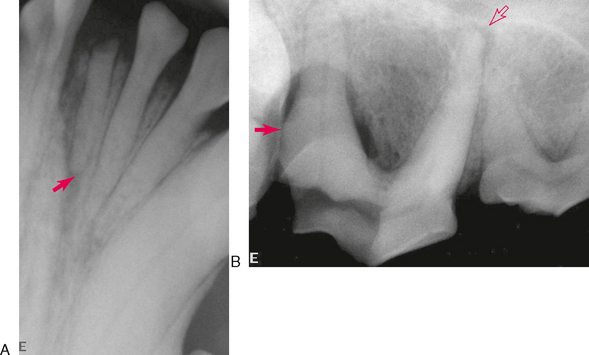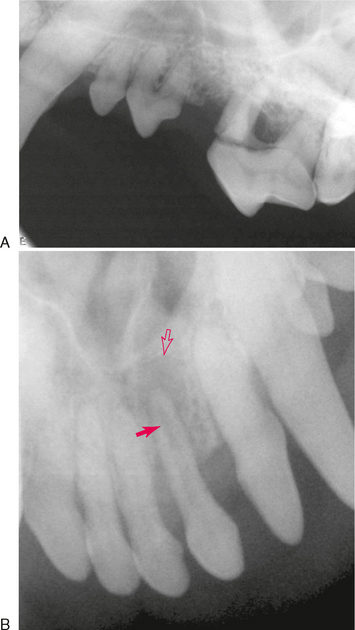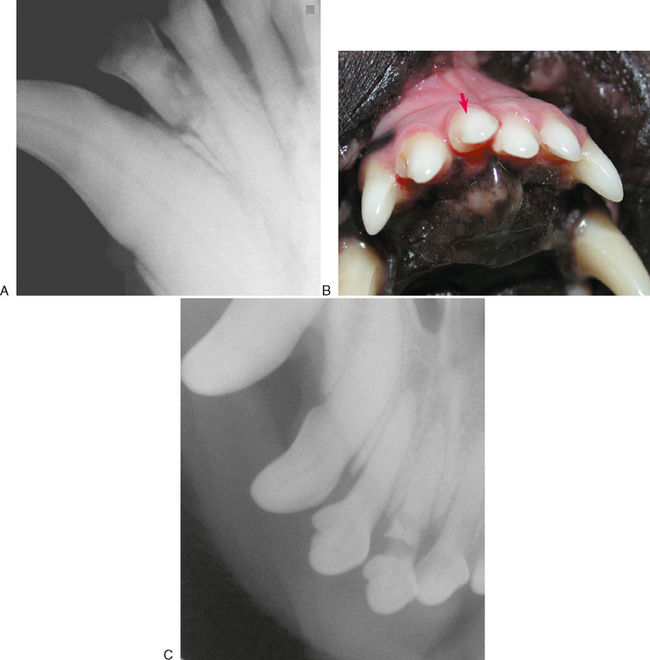CHAPTER 10 Trauma
Traumatic injuries to the face, head, and teeth occur in dogs and cats for many reasons, including motor vehicle accidents, accidental striking injuries (i.e., baseball bat, tennis racket, golf club), fighting with another animal, falling, and running into objects, as well as self-inflicted trauma from chewing and biting on hard or abrasive objects. Injuries may involve the teeth, jaws, or bones of the head including the bones of the temporomandibular joint (TMJ).
Patients with obvious traumatic injuries to their teeth frequently have no known history of trauma. An owner may notice that a tooth is missing or fractured and have no idea how it happened. When a tooth is missing without a known history of extraction, a dental radiograph is recommended. Traumatic injuries often lead to root fractures, loss of tooth crown, and retention of tooth root. Radiographs are made to identify persistent roots and any associated pathology (Figure 10-1, A). A crown fracture that exposes the pulp chamber will result in endodontic disease. When this occurs, the extent of pathology should be evaluated with a dental radiograph (Figure 10-1, B).
Traumatic tooth injuries are frequently noted for the first time when an oral examination is done as part of a physical examination or when a patient is under general anesthesia for performing periodontal treatment (Figure 10-2, A). Blunt trauma may result in damage to the pulp without fracturing the tooth. A dental radiograph should be made of any tooth that is discolored from pulp hemorrhage (Figure 10-2, B).
Root fractures with or without concurrent crown fractures occur secondary to trauma and affect the prognosis and treatment of the tooth (Figure 10-3).
Self-inflicted trauma to teeth occurs from chewing on a variety of inappropriate materials and objects that may cause soft-tissue trauma and excessive wear, concussive trauma, fracture, or luxation of teeth (Figures 10-4 through 10-8).
Stay updated, free articles. Join our Telegram channel

Full access? Get Clinical Tree





